Cucumber is a popular vegetable crop that is recognized not only for its culinary uses but also for its nutritional worth, which includes vitamins and minerals including potassium and vitamin K.
A cucumber plant grows in stages, from a tiny seed to a fully formed plant loaded with tasty fruits, each having its requirements and challenges. In this article, we’ll look at these growth stages and offer helpful tips for growing cucumbers.
Stages of Cucumber Growth
Seedlings Appear
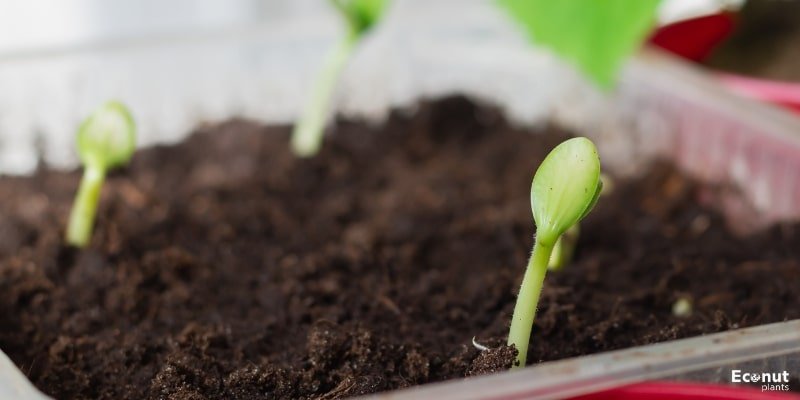
You should notice seedlings in three to ten days if your cucumber seeds germinated correctly. After emerging from the ground, small leaves known as cotyledons, or “seed leaves,” will begin to grow in a day or two.
When your seedlings are approximately four inches tall and have at least two sets of “true” leaves, trim them out and replant them farther apart if necessary.
Leaves and Vines Grow Larger
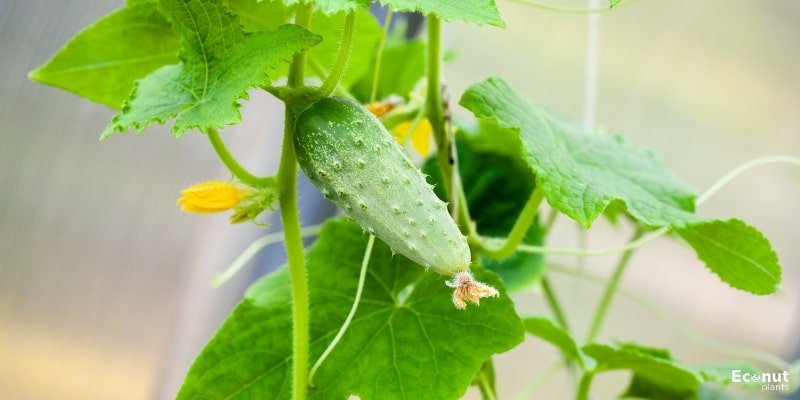
Your plants will grow larger and produce more vines in a matter of weeks. The leaves will enlarge and develop their characteristic serrated forms.
This is also the time that, depending on where your cucumber plant is planted, the vines may begin to meander around the planting area or climb up a stake or trellis. Watering close to the roots is preferable at this point over watering from above.
Light, with special reference to greenhouses
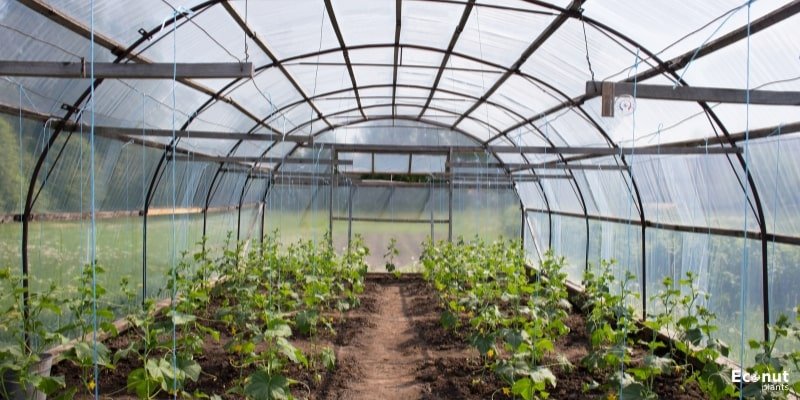
Light is essential for plant growth. Photosynthesis, which is the process by which plant matter is created, can only occur when light is absorbed by the chlorophyll found mostly in the leaves of the plant.
The light-induced fixation of atmospheric carbon dioxide and water in the plant produces sugars and starch through the process of photosynthesis.
In general, light intensity and photosynthetic rate are not inversely correlated. Since there is less light in the winter, its importance becomes clear. The low daily radiant energy levels in late autumn, winter, and early spring lead to low amounts of glucose production.
The minimal amount of carbohydrates produced during the day is mostly used up by the respiring plant throughout the night, in addition to the low light levels restricting photosynthetic output.
Relative humidity, with special reference to greenhouses
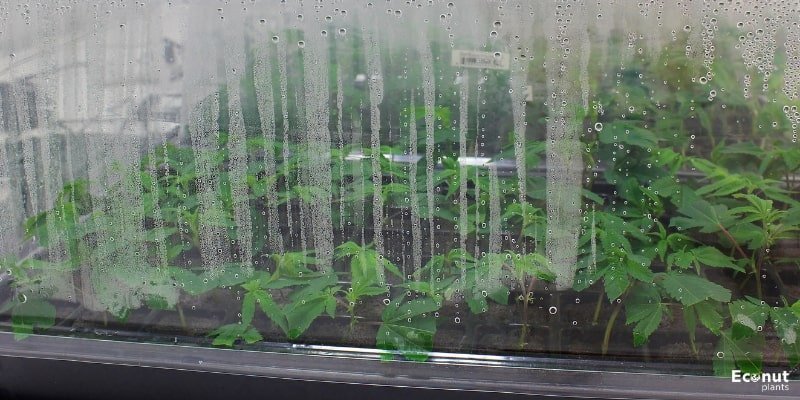
Relative humidity (RH) at high levels usually promotes growth. However, medium or even low relative humidity levels can still support adequate growth.
The crop responds quite sensitively to sudden and frequent changes in relative humidity, although it can tolerate and adapt to relative humidity levels ranging from very low to very high. The crop is more sensitive to such variation when grown in environments with high relative humidity.
Moreover, low relative humidity encourages the growth of spider mites and powdery mildew, which is reason enough to install and use misting systems.
Soils
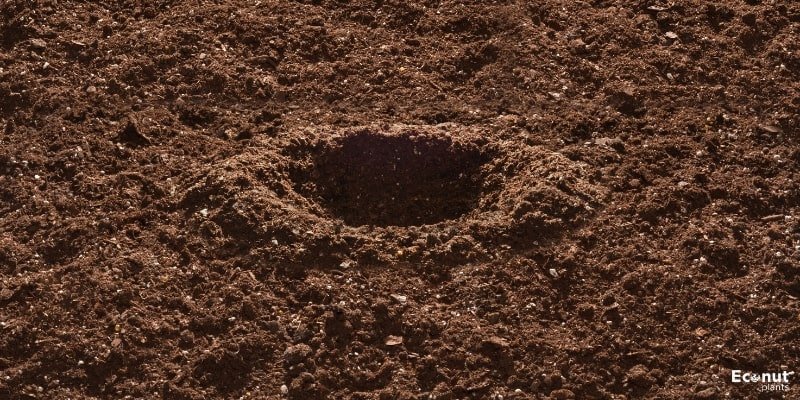
Light-textured, well-drained, organic matter-rich, and pH 6–6.8 soils are preferred by cucumbers. Tolerant to a broad variety of soil types; nevertheless, in sandy soils, it will bear fruit sooner. Even at pH 5.5, cucumbers can withstand somewhat acidic soils.
Although the pH range for greenhouse cucumbers (5.5–7.5) is usually recognized as optimal, mineral soils should have a pH of 6.0–6.5 and organic soils should have a pH of 5.0–5.5. If the soil’s magnesium content is low, add an equivalent amount of dolomite limestone or crushed calcite limestone to bring the pH up to a suitable level.
Most mineral soils used in greenhouses typically have a pH that is higher than the ideal range of 6.0 to 6.5. Adding peat to a high pH problem without first neutralizing its acidity with limestone is a quick, but temporary, fix. Peat is also beneficial in preserving a healthy soil structure, but its decomposition results in its loss, so it needs to be replenished annually.
Flower Buds Appear
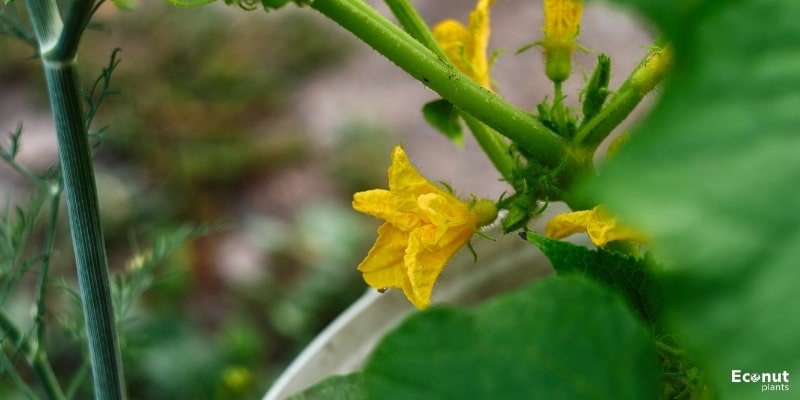
Depending on the kind of cucumbers you are cultivating, pollinators are needed for the female flowers, which appear a few weeks after the male blooms. Alternatively, they might be parthenocarpic types of plants, which are self-pollinating.
In either case, you can be certain that cucumbers won’t be far behind once the vivid yellow blooms start to bloom. Given that cucumbers are heavy feeders, fertilizer is advised to aid in their growth.
If your cucumber plants are producing both male and female flowers, don’t panic if the initial round of blooms doesn’t result in fruit—these are the male flowers. There will be both male and female flowers in the following blooming cycle, which will result in cucumbers.
Tiny Cucumbers Form
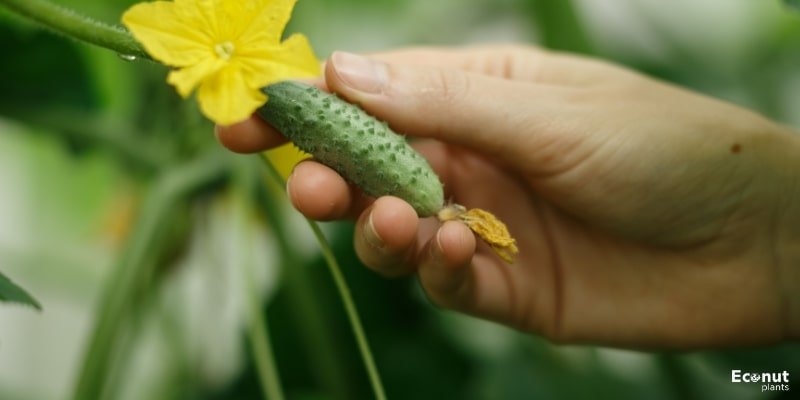
This is arguably the most exciting time to be growing cucumbers. Tiny cucumbers appear at the base of the bloom when female flowers open. Little cucumbers that have been pollinated will quickly grow to a size that can be harvested and enjoyed.
Watering regularly is crucial at this stage of growth. When watering, exercise caution, particularly in the event of extreme heat or dryness.
Although not wet, the soil should be damp. Once a day is sufficient in warmer weather; otherwise, every other day should work just fine. At this point in their growth, cucumbers could be ready for harvest in a few days.
Mature Cucumbers Are Ready for Harvest
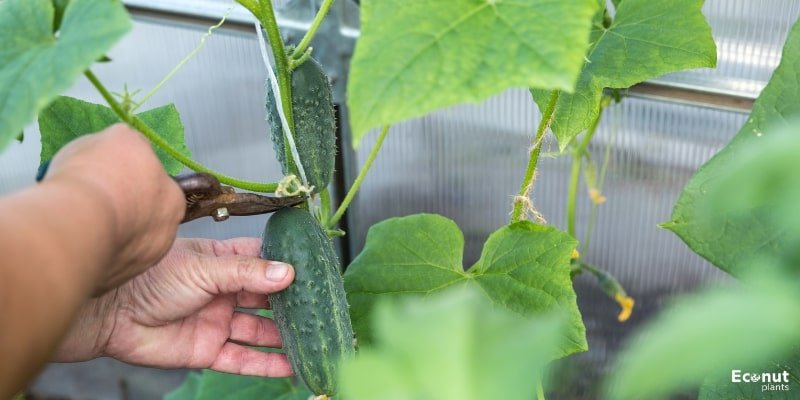
This occurs eight to ten days after the little fruits initially appear on the blossom; they have a rich green colour and a fresh juice scent.
To find out how big your particular variety should grow to maturity, check the information provided. Refrain from harvesting all of your cucumbers at once unless you intend to use them, and remember that different parts of your plant may achieve maturity at somewhat different periods.
Regular cucumber harvesting promotes the formation of new flower buds, allowing you to enjoy cucumbers for the entire growing season. Don’t let them grow too big on the vine; otherwise, they could become bland and watery. For advice on figuring out when your cucumbers are ready to be harvested, consult this page as well.
Common Issues in Cucumber Growth
Pests
Pests that can harm a plant range widely, from cucumber beetles to aphids. Your crop may be saved if it is identified and treated early. There are chemical and organic solutions for pest management.
Diseases
Many diseases, such as bacterial wilt and powdery mildew, can affect cucumber plants. Acquiring knowledge about these illnesses and how to manage them will protect you from possible crop failure. Would you be interested in learning more about: Why Do White Patches Appear on Plant Leaves?
Climate Challenges
The stages of a cucumber’s growth are greatly influenced by the weather. Growth might be hampered by extreme temperatures and erratic rains. Some of these issues can be alleviated by using shade cloths or greenhouses.
Conclusion
Cucumber plant life cycle exploration is a rewarding activity that has benefits beyond fresh produce—it provides priceless gardening knowledge.
The fresh, crisp flavour of homegrown cucumbers can be appreciated together with maximizing your production by being aware of the unique requirements and difficulties at each stage of growth.
FAQ
What is the duration required for a cucumber plant to yield fruit?
This is contingent upon the type. If grown from seed, the majority of cucumbers can be harvested in 50–70 days.
What is the lifespan of a cucumber?
Depending on the type, the growth cycle takes 50–70 days from planting to harvest. A few extra weeks can be added to the cucumber’s life cycle once you start harvesting them because new flowers can grow.
What is the duration required for cucumbers to grow after flowering?
Usually, little cucumbers appear shortly after blossoming. In eight to ten days, your cucumbers might be large enough to harvest if you give them regular watering.

